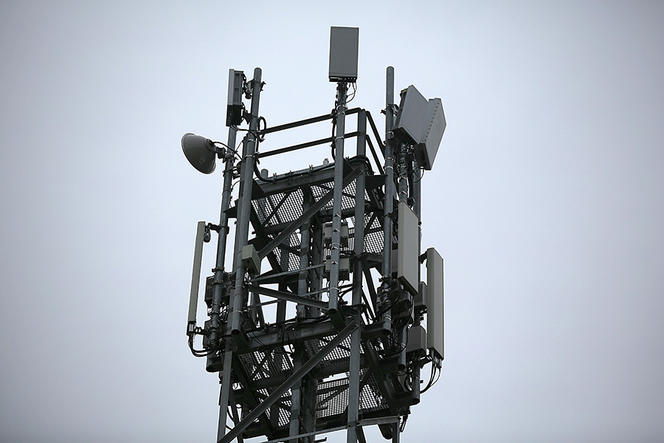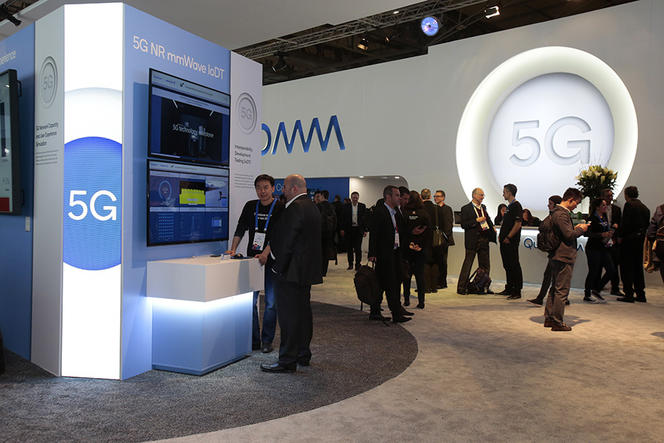What Are Cnrs Camera Phone News Releases
With the inflow of 5G in less than ii years, researchers are testing and trying to strengthen the security of this new generation of mobile phone standards.
With top speeds of 20 gigabytes per second, 5G should reach our phones in 2020. Users are delighted by the arrival of this fifth generation standard for mobile telecommunications, whose data rates, which are up to 10 times faster than 4G, promise to go on upward with our increasingly data-intensive mobile applications. While this standard is still being conceived at 3GPP,ane the organization that brings together representatives from industrial actors and telephone service providers, unlike inquiry teams are taking advantage of this developmental phase to examination and strengthen the futurity norm.
At the French laboratory LORIA,2 Jannik Dreier and his colleagues are exploring various directions for improvement. "3GPP always places corking emphasis on faster speeds," explains the senior researcher at Télécom Nancy. "Yet protocols also change in other directions with each new generation, particularly with regard to security."
Old Flaws
In collaboration with researchers from ETH Zurich and the University of Dundee in Scotland, Dreier points out the persistence of security flaws within the new 5G standard at the CCS3 briefing in Toronto. "5G inherits flaws that go back to the very kickoff version of the identification protocol," Dreier regrets. "All of the security is based on SIM cards, which store the identification keys shared with the network." Security bug are inherent to wireless technologies, because unlike the transfer of information confined inside a cable, nothing protects information when it transits through the air. Every bit a result, security relies on the capacity of the telephone and the network to place and cosign one some other when they connect. At the same time, all of the personal information and data belonging to the mobile subscriber must be preserved. But the system is not perfect. Dreier draws attending to the risk of traceability in the event that the telephone can be identified and then followed. This operation is adequately easy to deport out with 4G, thanks to devices such as IMSI-catchers,4 which scan exchanges betwixt the mobile phone and the network'due south antenna relays to track their target. "5G will solve the problem with regard to passive attackers that only heed," Dreier specifies. "But if someone injects messages in the advice between the phone and the network antenna, which is relatively easy, information technology once more becomes possible to trace the mobile phone and its user."

Relay antennas make it possible to test 5G under real conditions, like those used in Frg (pictured).
A 'counter' problem
Hither once again, information technology is the celebrated architecture of mobile telephone networks that is to blame. Since the get-go SIM cards could non generate random values, everything was based on a arrangement of counters, which was designed to avert receiving the same bulletin multiple times. "SIM Cards could use a different technique today considering they can generate random values," he explains. "But determination makers evidently did not want to alter the standard that greatly."
"Traceability tools are notably used by the police and intelligence agencies. It allows them to make up one's mind who was most a crime scene, only too who was near a political demonstration. It'southward very useful for them, but it tin be used for mass surveillance." Given that two thirds of the earth's population uses a mobile phone, it is hard not to fear abuses, allow lonely its misuse by criminals.

5G was the hightlight of the Mobile World Congress, held in Barcelona in February 2018.
Having Someone Else Pay Your Bill
Created in partnership with ETH Zurich, LORIA, and CISPA5 in Sarrebruck, the Tamarin verification tool can analyze the security of a given protocol. Dreier and his colleagues have analzyed 5G AKA,6 the security protocol that has been implemented since 3G, and that the 3GPP would like to continue to ameliorate.
"We are trying to improve security, not to intermission things apart," insists Dreier. "Nosotros are conducting formal verifications to ensure security." If the protocol does not contain flaws, Tamarin establishes a mathematical proof of its security. Yet in problematic cases , the tool generates a description of the assault that was identified. This enabled researchers to discover another flaw in 5G AKA that could result in calls being billed to someone else, when two telephones are used simultaneously in close proximity. "Although in practice this flaw is probably hard to exploit, information technology is not excluded by the standard. We sent these results to the 3GPP, but for the moment received only a fairly cursory initial response. The process indeed takes time, because it involves in-person meetings, proposals, and finally a vote. We are not part of these organizations, and it is their option whether to modify the protocol."
Despite the fast-budgeted 2020 delivery date and official arrival of 5G, numerous improvements can still be made, peculiarly with regard to software. LORIA researchers are working toward adapting tools such equally Tamarin then that computer engineers tin can use them directly during the design phase. "Unfortunately, the issues of traceability will not be solved solely by some pocket-size changes," Dreier insists. "Ane needs to stop using a counter in SIM cards, simply that would require a total redesign of the protocol…"
Source: https://news.cnrs.fr/articles/securing-tomorrows-5g-network
Posted by: moorenetaid.blogspot.com

0 Response to "What Are Cnrs Camera Phone News Releases"
Post a Comment